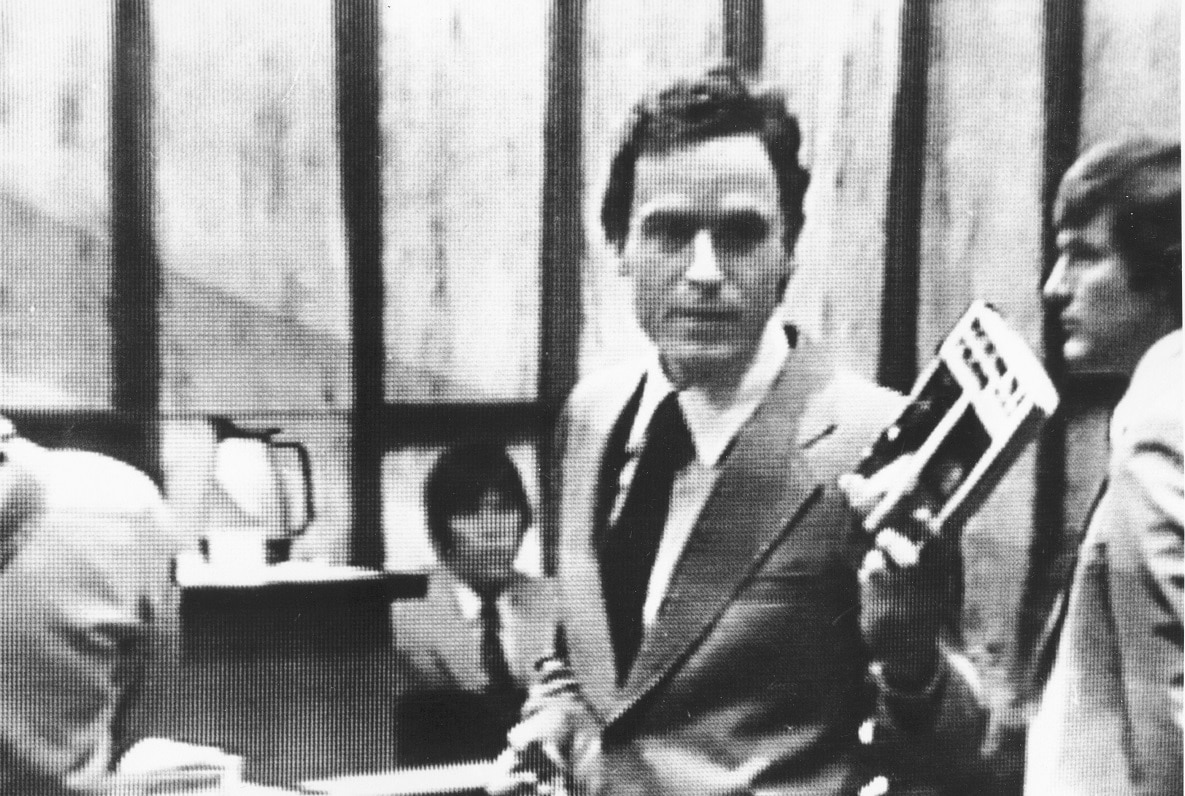Create a free profile to get unlimited access to exclusive videos, breaking news, sweepstakes, and more!
How Did Ted Bundy Get Away With His Murders For So Long? With Good Looks, Friends And More
Ted Bundy killed more than 30 women in a murder spree that spanned several states and many years.

Living in a society partially defined by unlimited access to privacy-crushing internet and open-and-shut forensic crime dramas, it's hard to imagine that just over 40 years ago, a serial killer like Ted Bundy could stalk his victims without fear of DNA profiling or social media sleuthing getting in his way.
Netflix’s recent docu-series, “Conversations With a Killer: The Ted Bundy Tapes,” shines a light on this wild and violent era by providing new audio recordings and insights into Bundy’s years-long, cross-country rampage — which resulted in the deaths of more than 30 women — and his subsequent capture, conviction, and execution. It also highlights how a maniac like him could slip through the cracks and avoid detection by local law enforcement agencies, all while kidnapping, raping, and killing his way across several states.
Here are five reasons why Bundy was able to elude capture by authorities for so long.
He used his handsome, everyman appearance to his advantage.
The Netflix series makes clear that Bundy could simultaneously captivate people and also walk the streets undetected. The fact that he was “normal-looking,” social, and smart allowed him to glamor people and play whatever role necessary to deceive both his victims and those closest to him.
Elizabeth Kloepfer, Bundy’s long-term girlfriend, suspected her beau was involved in some heinous stuff, but still couldn’t manage to reconcile what she felt in her gut and what she thought in her head.
“In my own mind, there were coincidences that seemed to tie him in,” Kloepfer told authorities during a 1980 interview. “Yet, when I would think about our day-to-day relationship, there was nothing there that would lead me to think that he was a violent man capable of doing something like that.”
He lived multiple lives.
Bundy managed to carry on what seemed like normal relationships throughout his killing career: He maintained long-term romantic partnerships and also platonic friendships even while he was out wreaking havoc on cities on both coasts. He appeared to relish this deception.
“Ted Bundy was a complex man who somewhere along the line went wrong,” one of his prosecutors said when Bundy was executed in 1989. “He killed for the sheer thrill of the act and the challenge of escaping his pursuers.”
He used trusted institutions to cover his tracks.
In addition to hiding behind the veneer of normalcy in his private life, Bundy also managed to evade capture in the shadows of universities, churches, and law enforcement agencies.
Bundy found time to kill his victims while acting as assistant director of the Seattle Crime Prevention Advisory Commission — where he wrote a rape-prevention pamphlet for local women, according to the New York Times — as well as attending law school at the University of Utah and becoming a member of the Church of Latter Day Saints. His apparent passion and commitment for these endeavors cast Bundy in a positive light with those he interacted with.
“I felt that he was a handsome young man that seemed to have his life pretty much in order,” Michael Preece, Bundy’s former LDS branch president, says in the Netflix docu-series. “He came to the activities. He came to the church meetings and responded in a positive way.”
But as a man who knew Bundy before the first murder charge in Utah pointed out, according to the Times, “He was so well thought of that he was the assistant director of the Seattle Crime Prevention Advisory Commission the same year all the killings started!”
He took advantage of local law enforcement’s lack of communication.
Even as a string of murders and disappearances plagued Utah right after Bundy moved there from Washington State, which was also dealing with its fair share of heinous crimes against several young women, police units in both states couldn’t connect the dots.
Robert Keppel, the lead investigator in the case in Washington, described taking phone calls from anybody who had a shred of info, while Seattle homicide detective Katy McChesney talked about working 14-hour days on the case.
Like Bundy said in the docu-series (speaking in the third-person), he was primarily concerned with “moving large amounts of distance” to “camouflage what he was doing.”
After several months, investigators in Washington were ready to give up because the leads on the missing women in that state had dried up. But in March 1975, bodies were found in Washington’s Taylor Mountain by a group of student foresters, and then by August of that year, Bundy was pulled over and arrested in Utah. That’s when police found a brown gym bag containing a ski mask, an icepick, “some strips of torn sheet,” a crowbar, pantyhose and handcuffs. Bundy also matched the description of the person who tried and failed to kidnap Carol DaRonch.
“From that moment on, we thought, ‘This might be the ‘Ted’ that we were looking for,” McChesney says in the docu-series. Soon afterward, Nick Mackie, the captain of the Washington Sheriff’s Department in King County confirmed that the same ‘Ted’ was also a suspect in their cases, and the investigation of Ted Bundy truly began, eventually leading to his convictions.
But even after authorities caught him, Bundy still managed to escape from prison twice.
He constantly changed his appearance.
Throughout Netflix’s docu-series, it’s clear that Bundy not only shuffled from state to state to avoid capture, he also constantly changed his appearance up to keep cops guessing.
He went from clean-cut and boyish to shaggy and sideburns-y to mustachioed to mountain man-esque during his crime spree. But no matter the difference in facial hair, his sinister eyes and smile always remained the same, no matter what they were framed by.
[Photo: Associated Press]


























